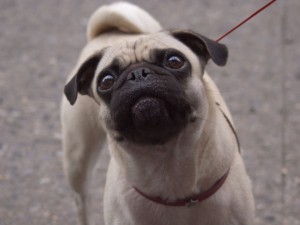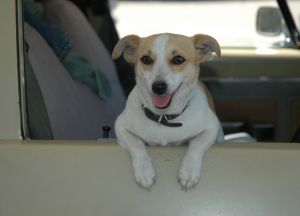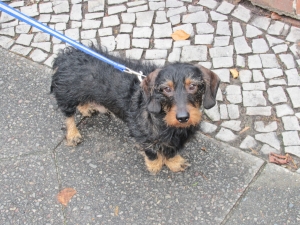 The Pug is known for his clownish demeanour and is a natural jester. Although his origins are not clear, pugs were kept in many parts of Asia as pets by royalty and monks. They are an old breed with their likeness appearing in lots of old artworks. They are active and lively, little dogs that make fabulous family pets.
The Pug is known for his clownish demeanour and is a natural jester. Although his origins are not clear, pugs were kept in many parts of Asia as pets by royalty and monks. They are an old breed with their likeness appearing in lots of old artworks. They are active and lively, little dogs that make fabulous family pets.
Traits
The typical pug weighs between 10 and 20 pounds but is much sturdier than most toy breeds. He is active and fun loving but prone to being lazy and overeating if indulged. Because their energy needs are relatively easy to meet and they are inactive indoors, they are ideal dogs for apartment dwellers. Although they can be stubborn and melodramatic, pugs are quite trainable. They come in various shades of fawn and black. The short nose and large eyes are typical of the breed and do require some special care.
Training
The pug is an intelligent dog that is easily bored. Training needs to be geared towards short sessions with lots of positive encouragement. House training can be challenging as it often is with smaller dogs. Smaller bladders mean that many pugs cannot be left alone all day and expected to hold it until you return from work. Indoor training using puppy training pads or a litter box is recommended.
Children
Unlike many toy breeds, the pug is sturdy and much less likely to be injured. They can be excellent with kids and are generally quite patient. You need to watch that children don’t accidentally injure the large eyes as they are slightly protruding and at greater risk of injury than in many other breeds. Care should also be taken to ensure that kids don’t over tax them as they are quite weather sensitive and prone to breathing difficulties.
Health
The pug is prone to a few health conditions including patellar luxation, pug dog encephalitis (PDE), allergies, breathing disorders related to the short muzzle, skin problems, and eye issues including keratitis, corneal ulcers and cherry eye. They can be quite sensitive to the weather and should not be left outdoors in hot or cold weather. This can be further exasperated by respiratory difficulties due to the shortened muzzle.
Needs
The short coat requires little in the way of grooming although regular brushing will cut down on shedding. The creases around the face need to be wiped out and cleaned on a regular basis. They are prone to obesity and it is important to ensure that the pug is not overfed and kept active. Pancreatitis is a potentially fatal problem in many dogs, particularly small breeds like pugs if spoiled with excessive fats. That being said, owners should watch for any signs of wheezing or respiratory distress and cease exercise immediately. If difficulties persist surgery may be required to clear the airways more thoroughly.





